Non-Linear Functions Worksheets
Combining Translations and Reflections of Graphs
Year groups: 10, 11
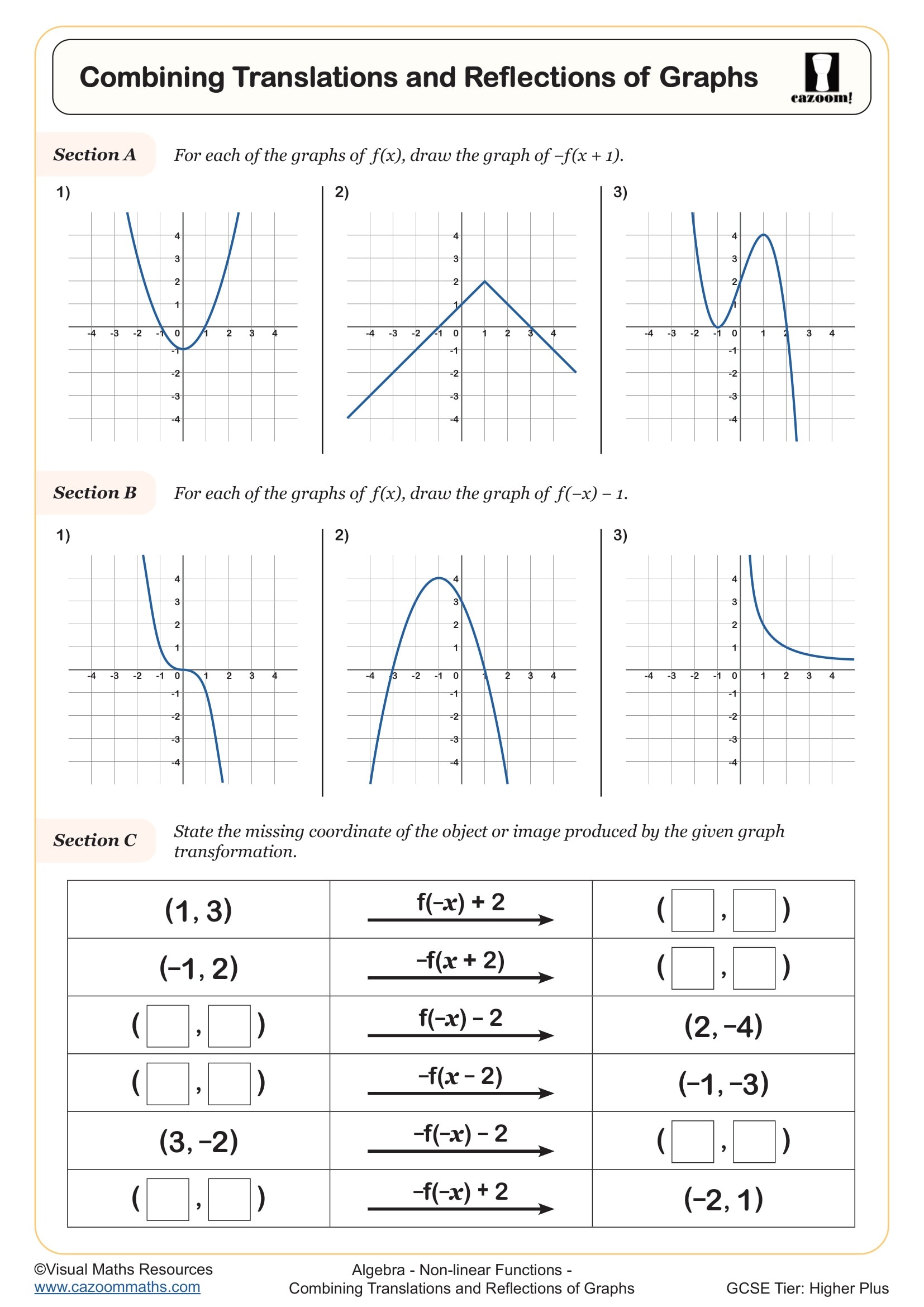
Completing the Square
Year groups: 10, 11
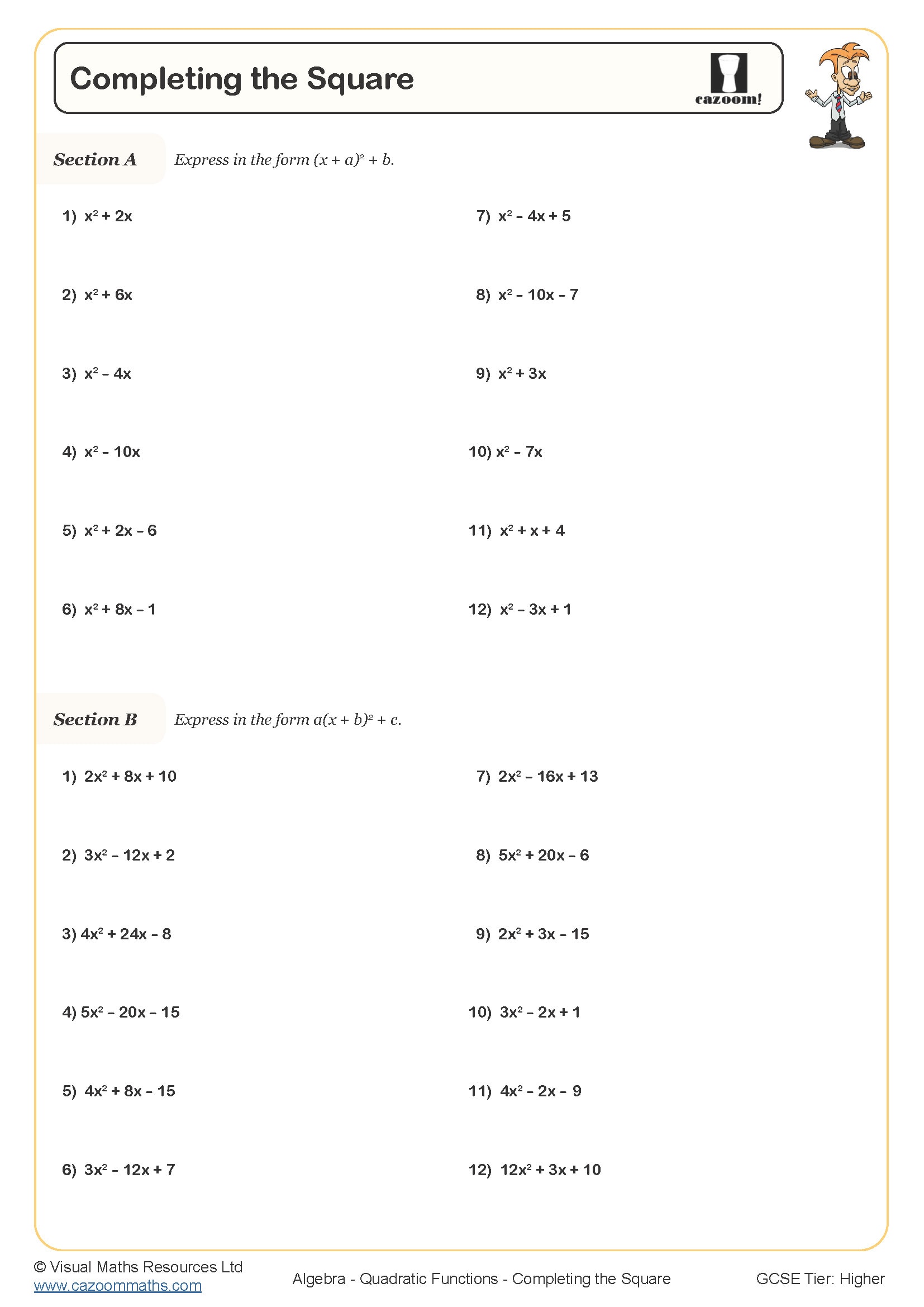
Completing the Square - Using Algebra Tiles
Year groups: 10, 11
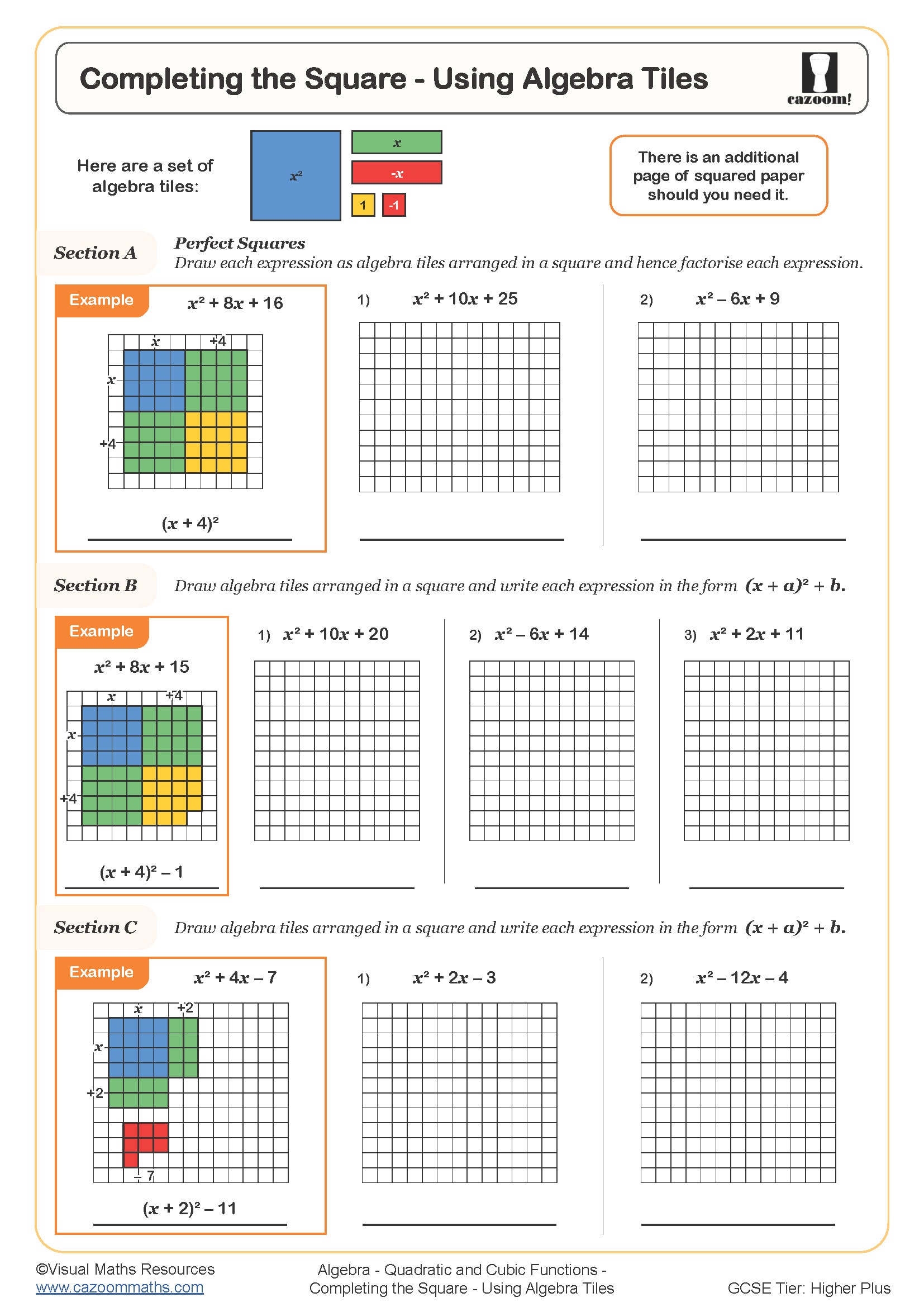
Cubic Graphs - Recognising, Sketching and Interpreting
Year groups: 10, 11
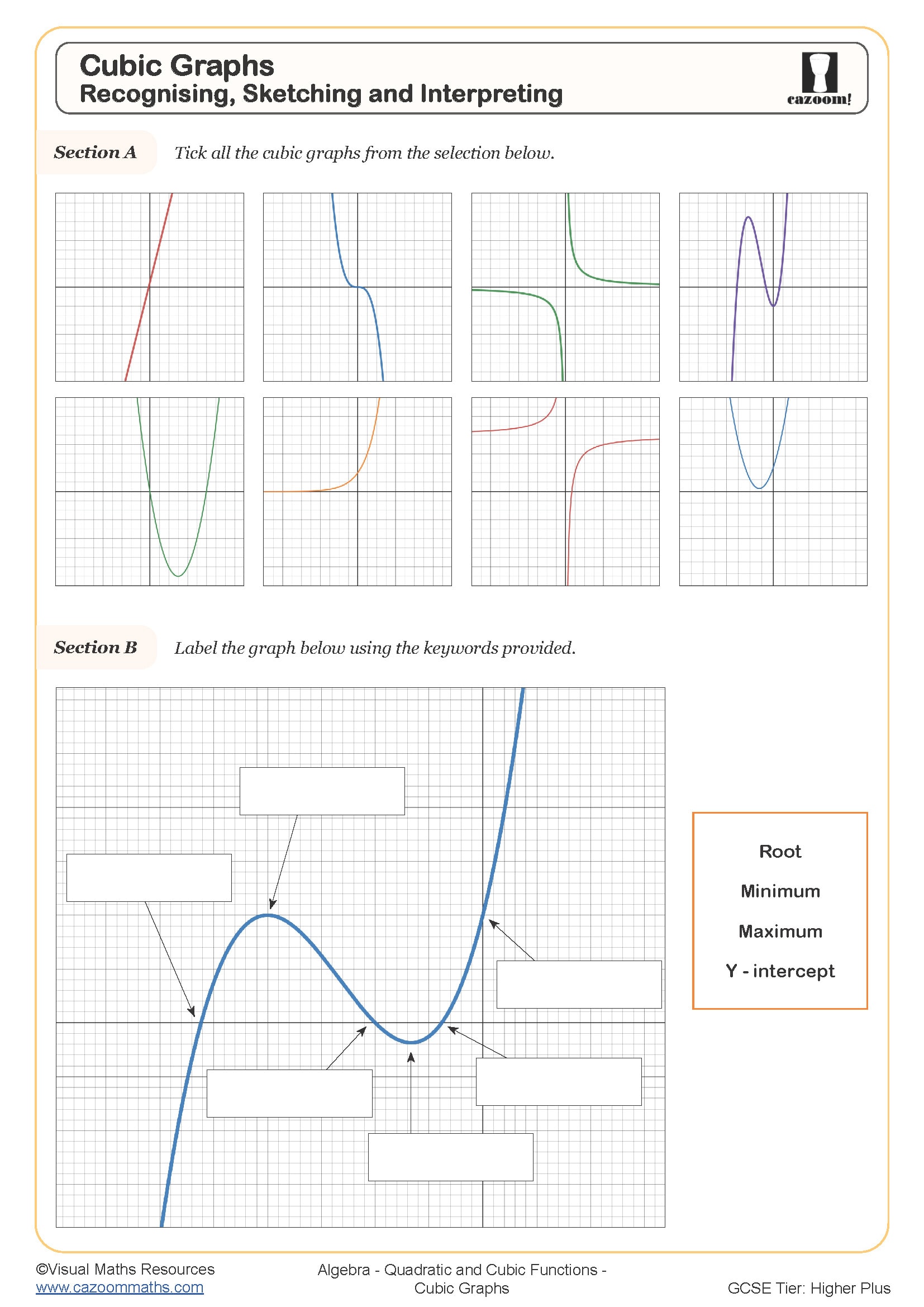
Exponential Graphs and Equations
Year groups: 10, 11
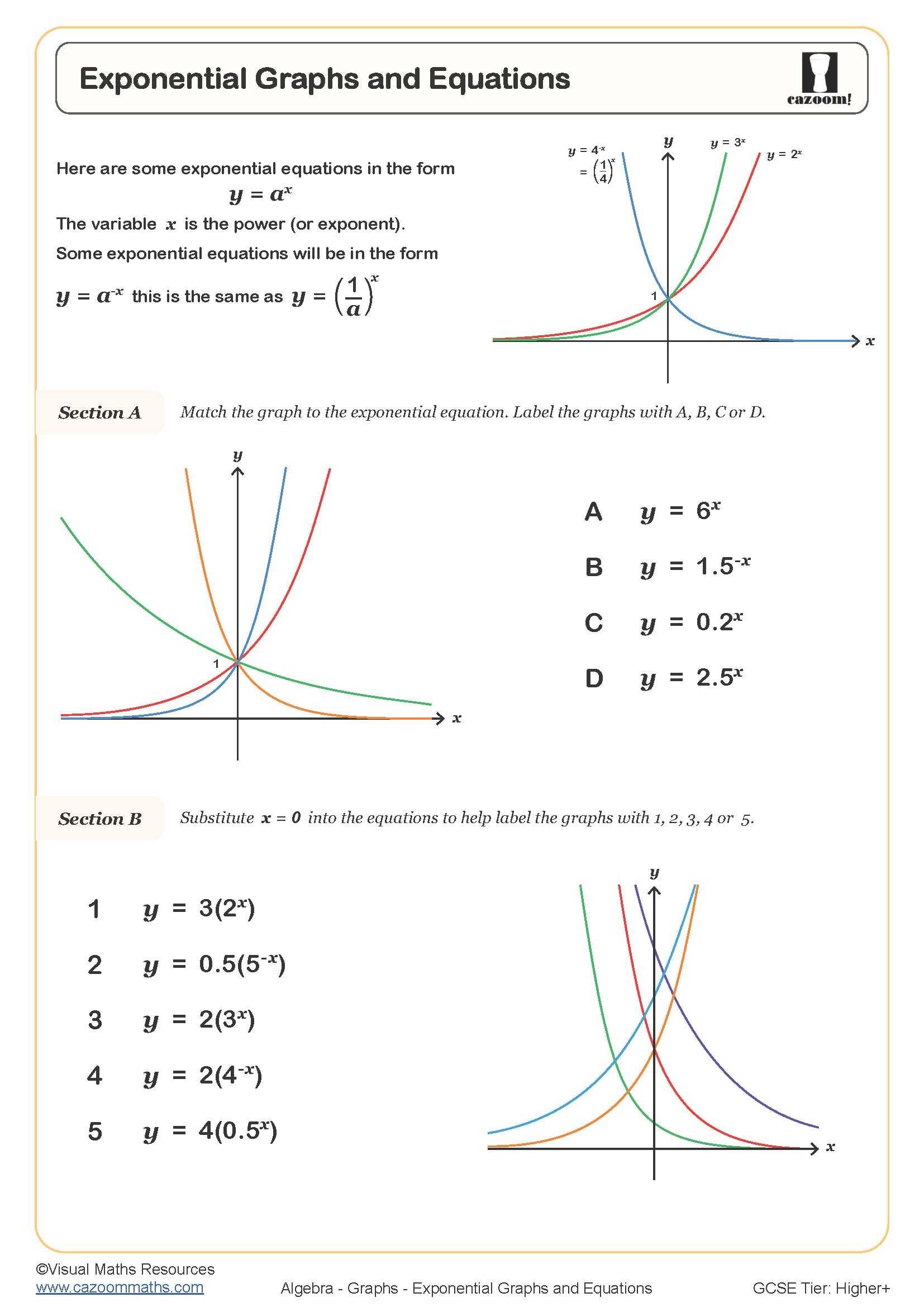
Identify Linear and Non Linear Functions
Year groups: 10, 11
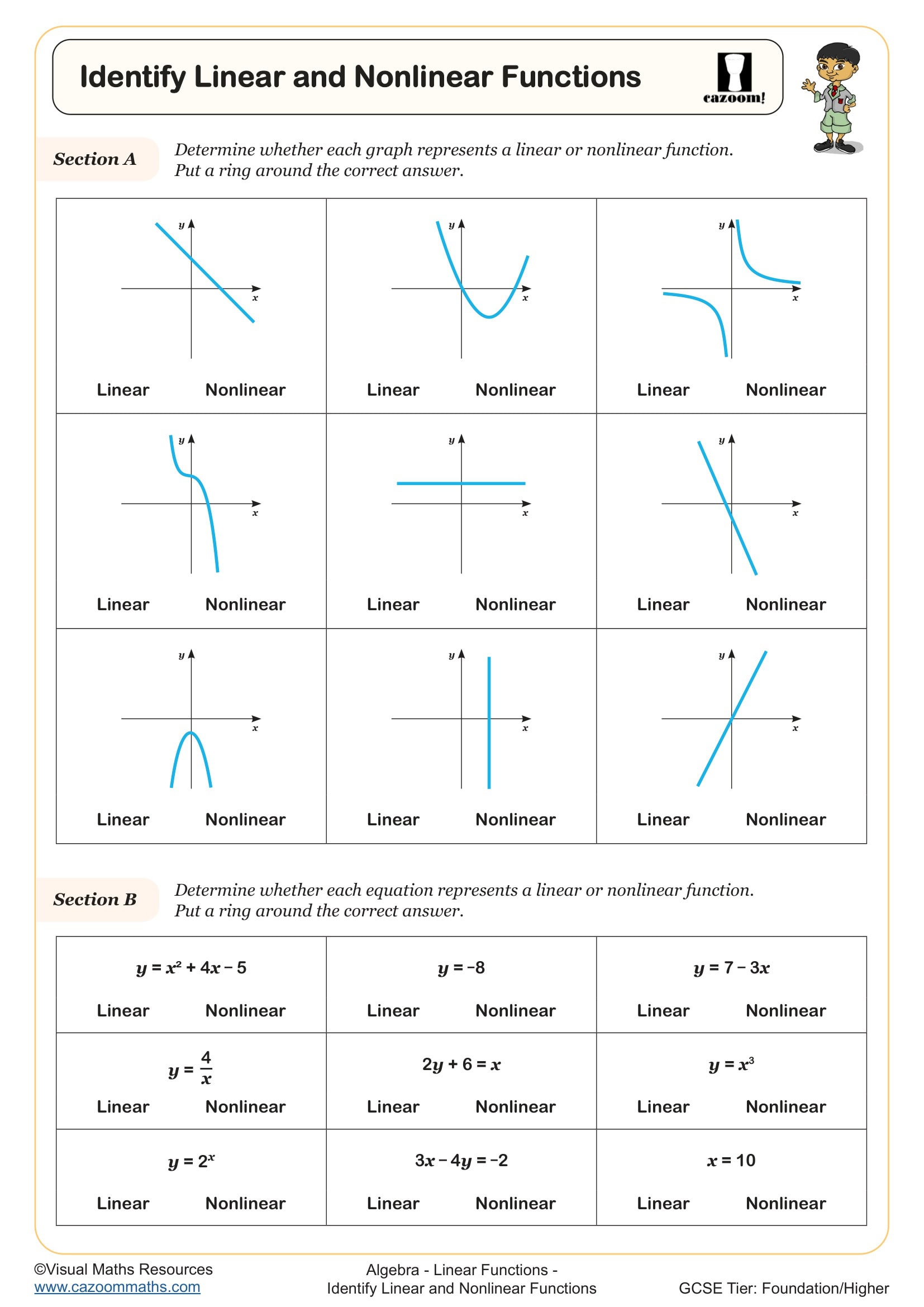
Plotting Cubic Graphs
Year groups: 10, 11
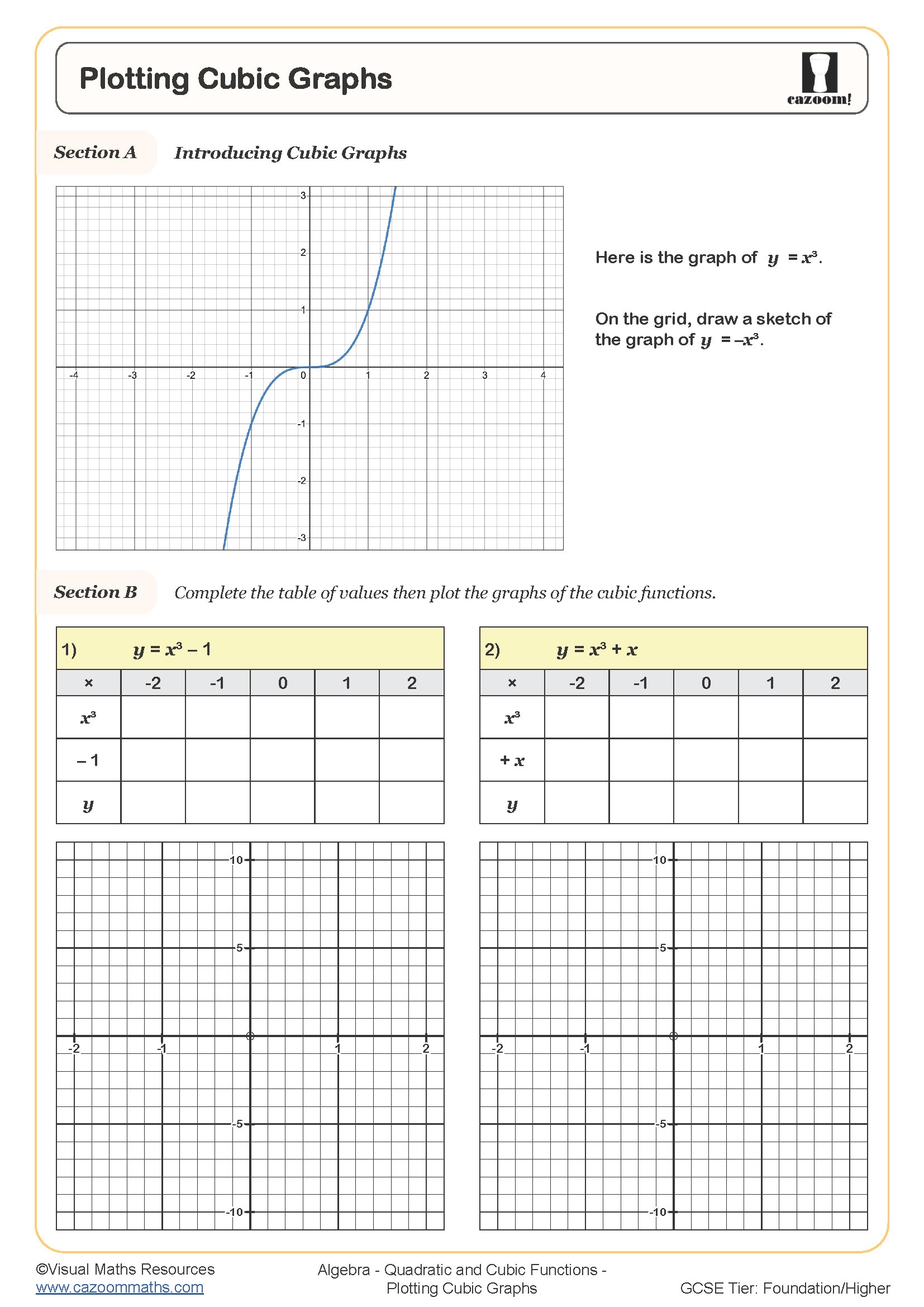
Plotting Exponential Graphs
Year groups: 10, 11
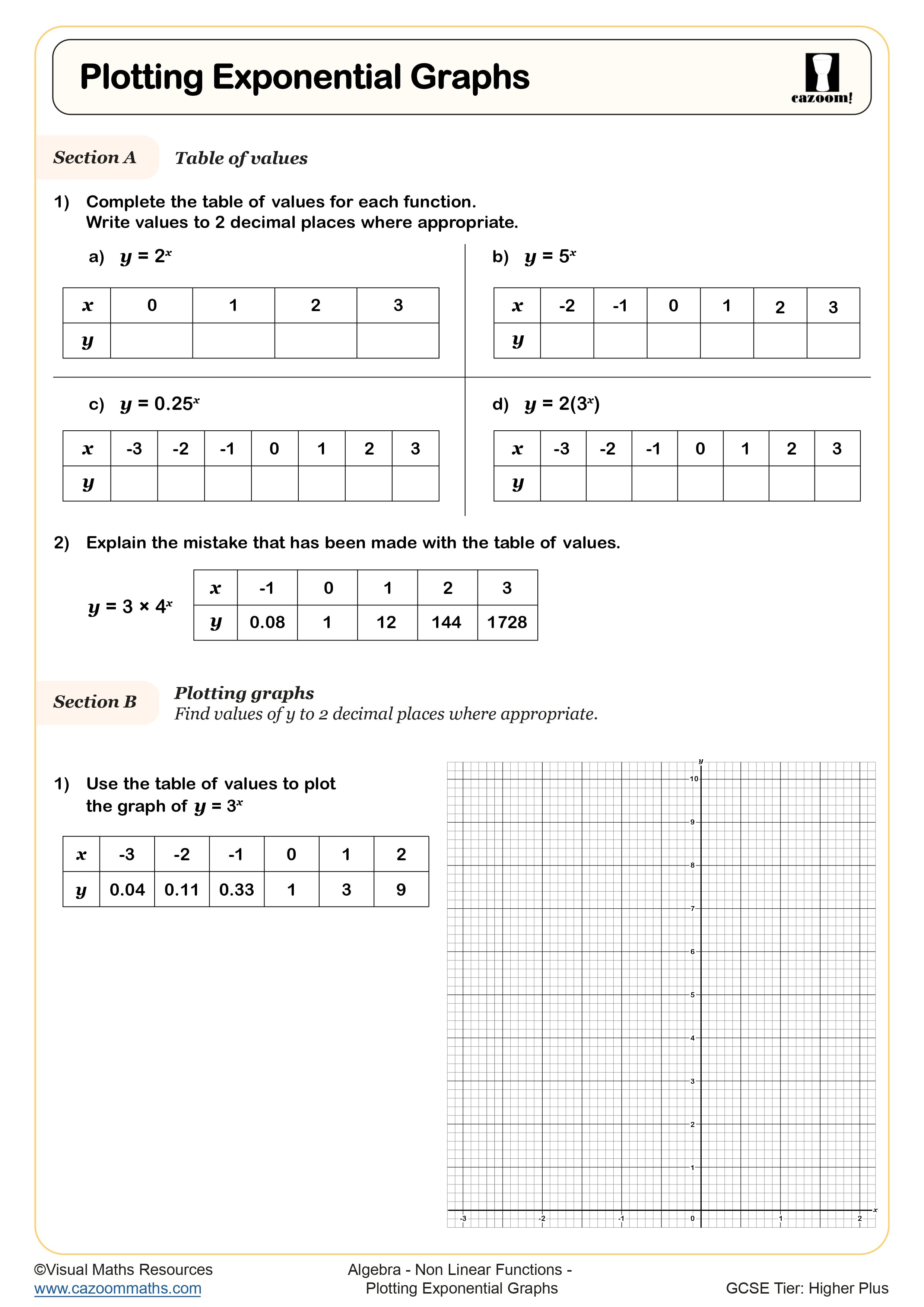
Quadratic Graph Sketching
Year groups: 10, 11
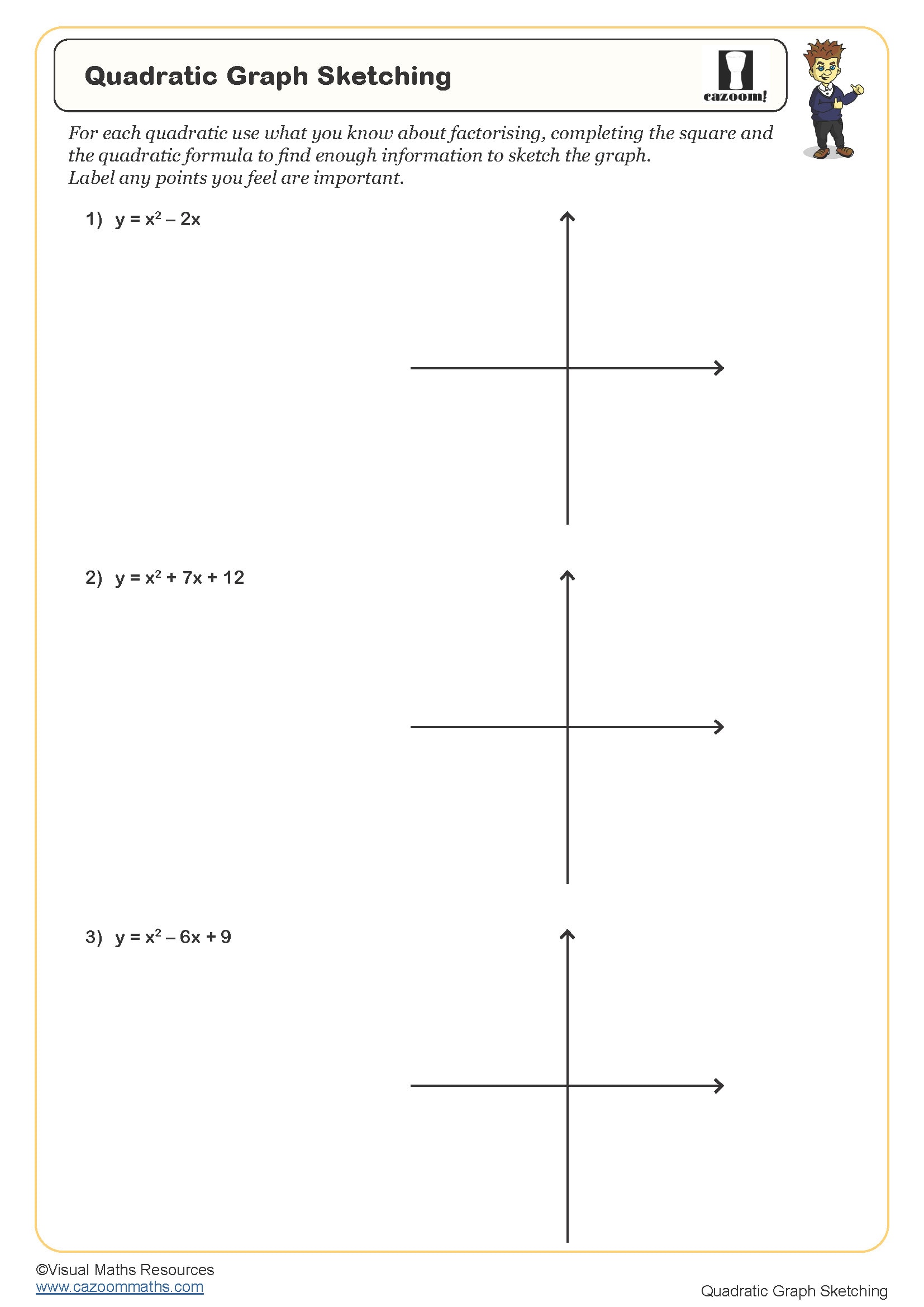
Quadratic Graphs (A)
Year groups: 10, 11
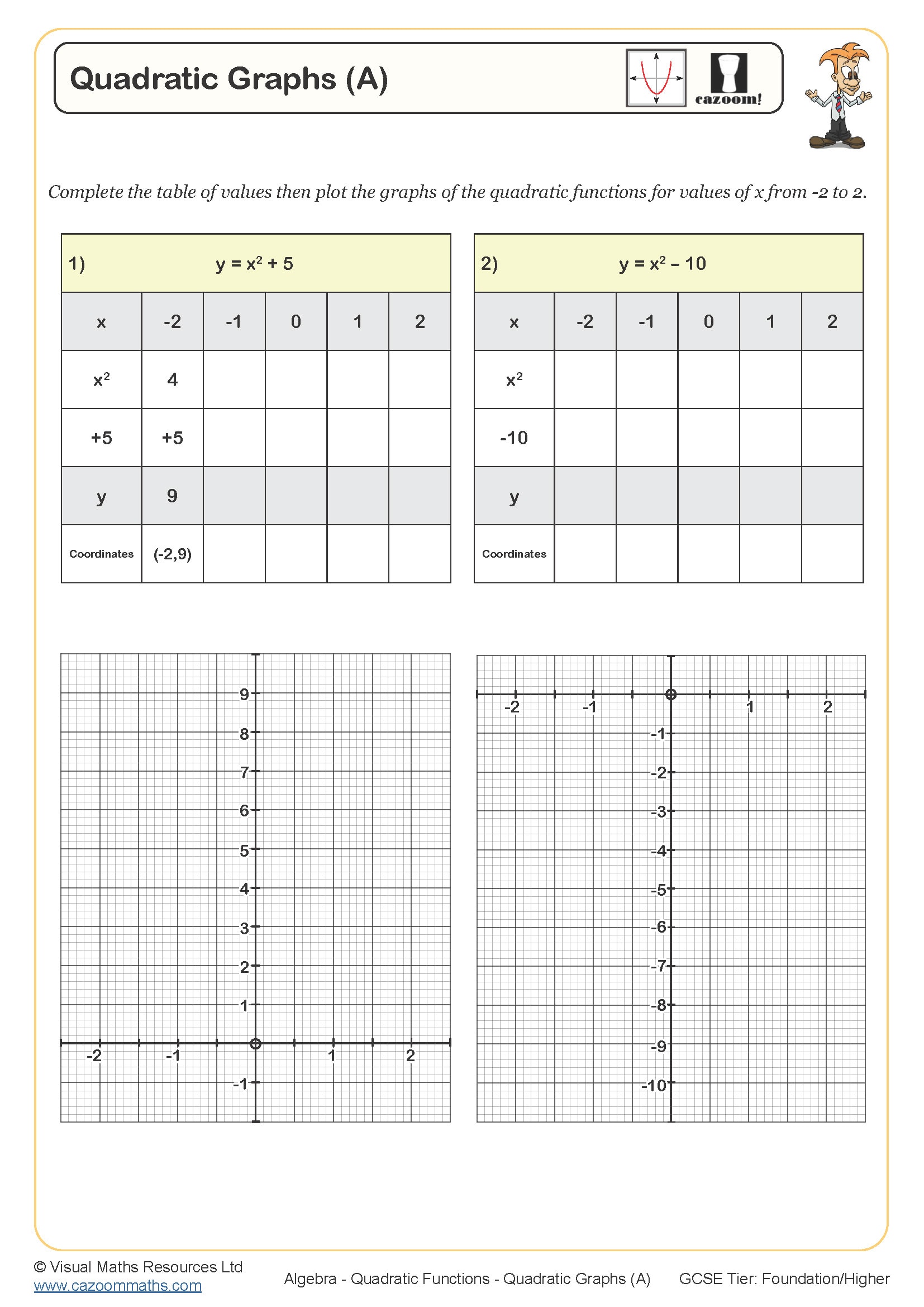
Quadratic Graphs (B)
Year groups: 10, 11
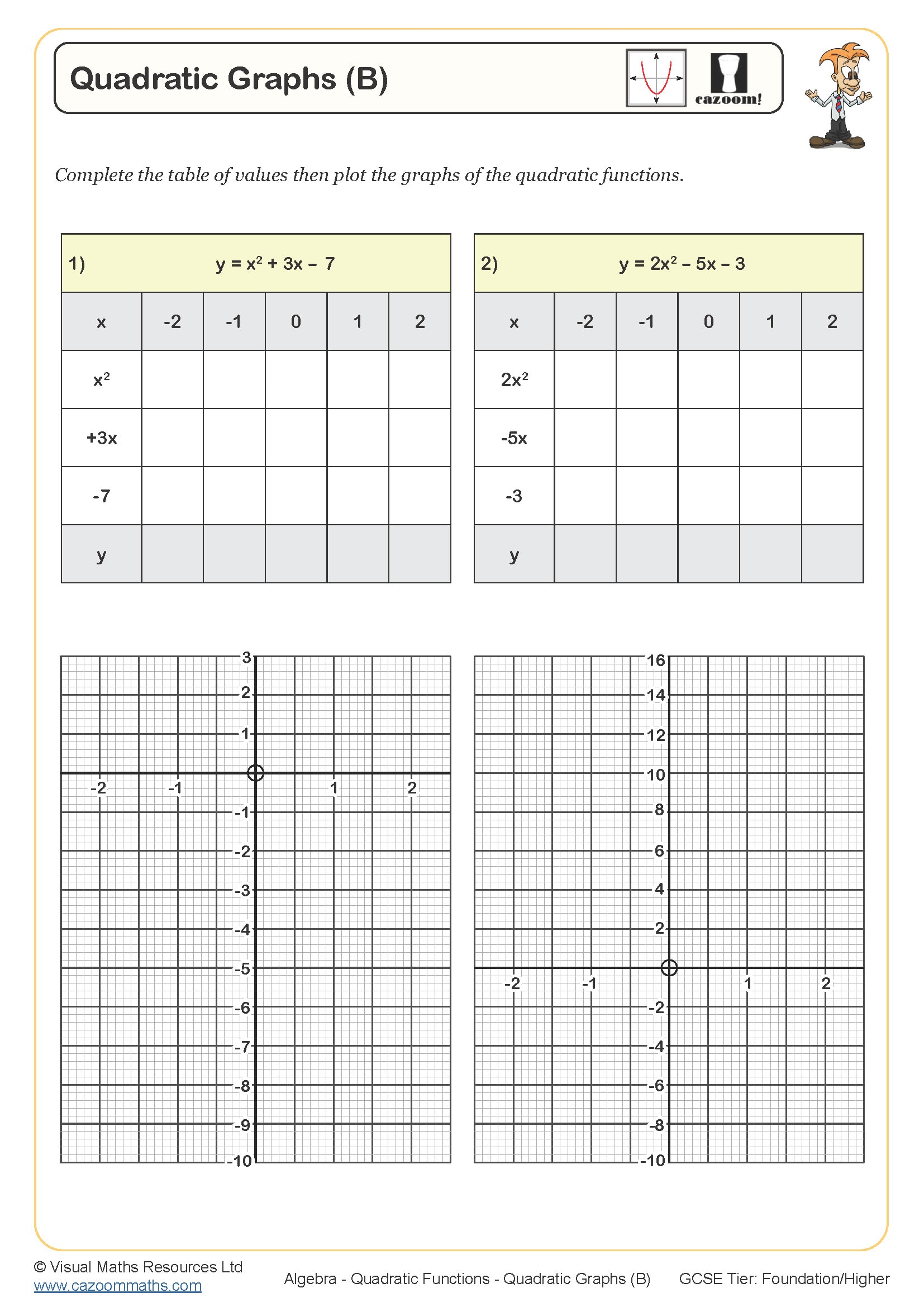
Recognising Cubics, Quadratics, Reciprocals and Straight Line Graphs
Year groups: 10, 11
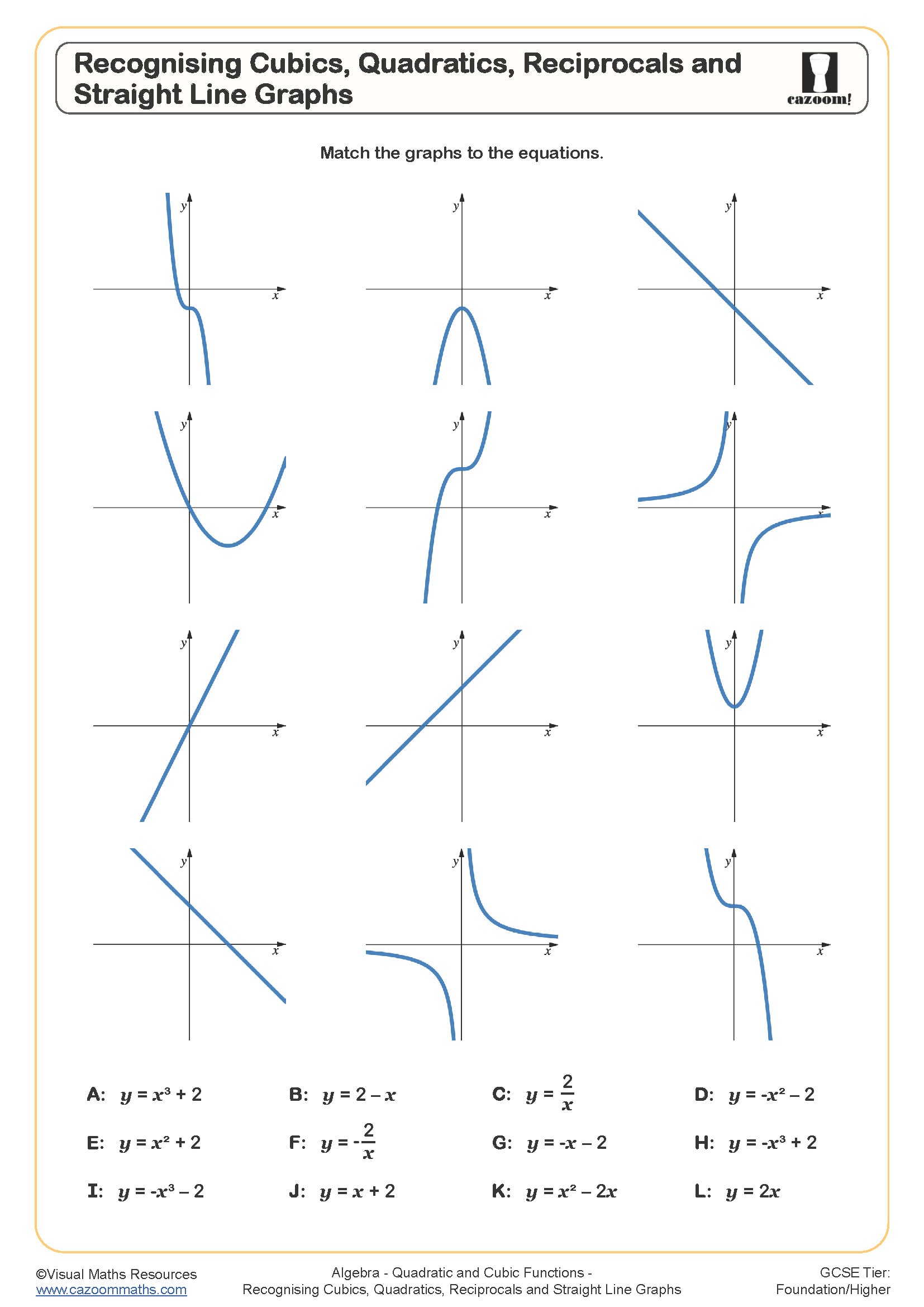
Recognising Graphs
Year groups: 10, 11
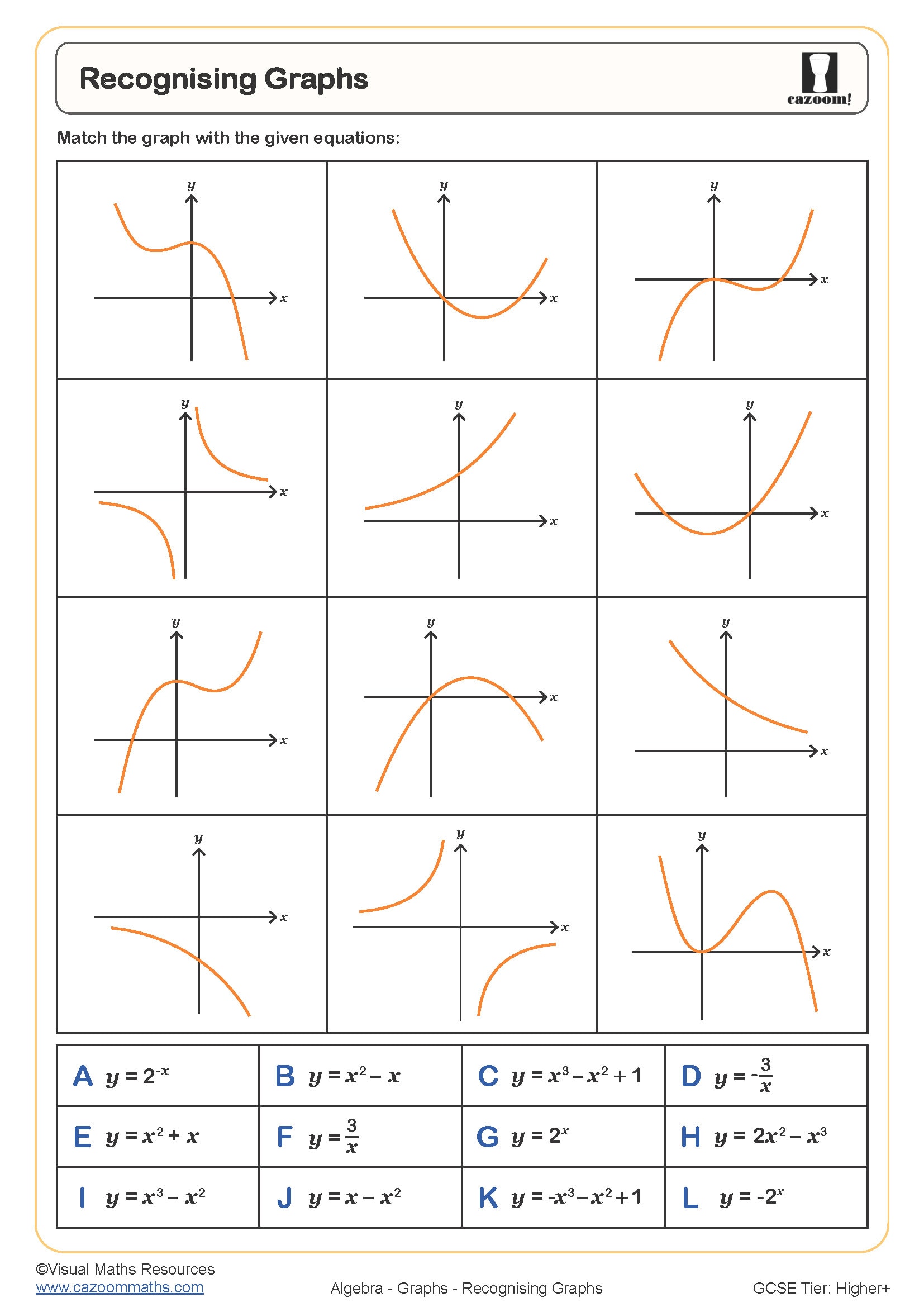
Reflecting Graphs
Year groups: 10, 11
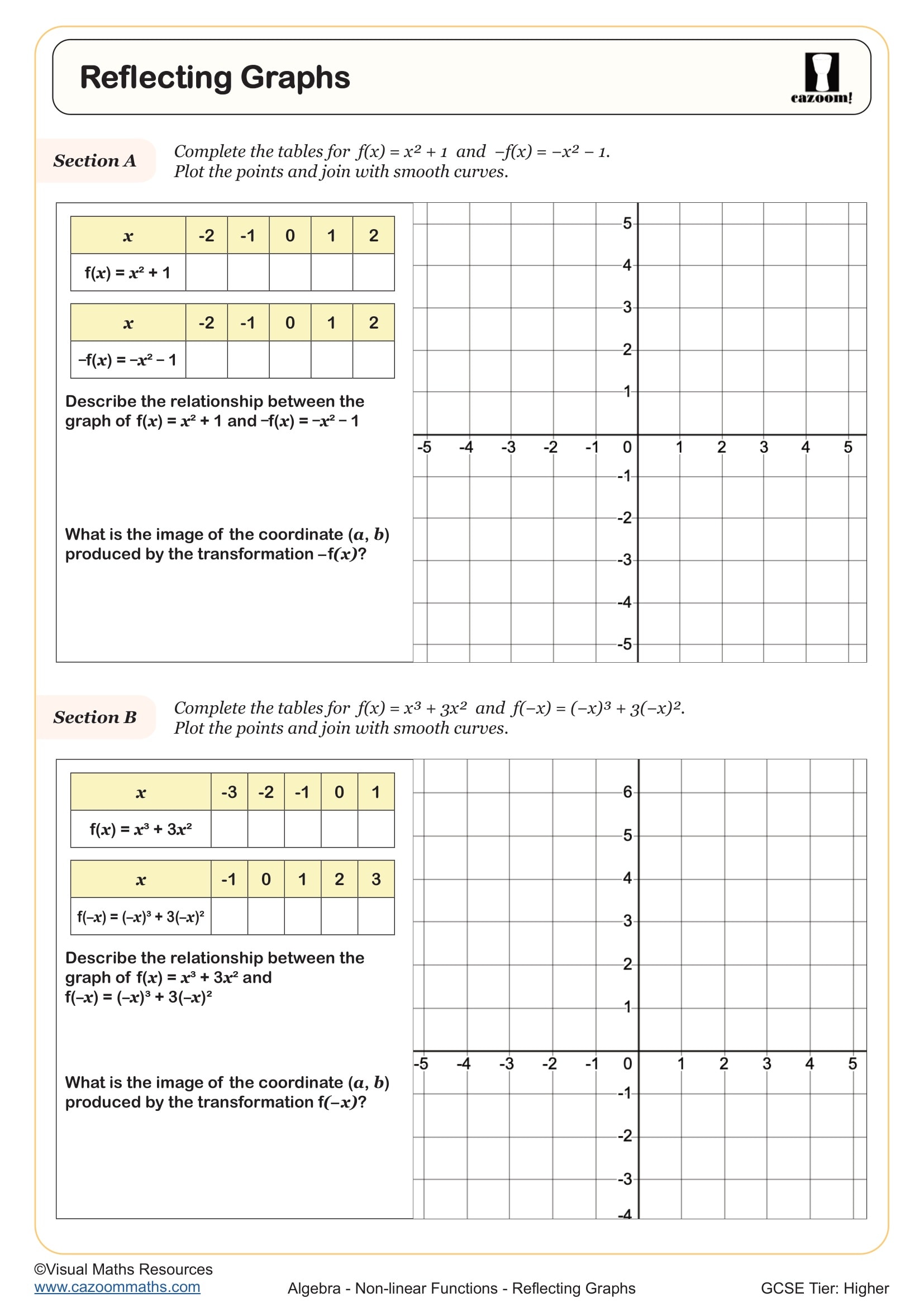
Translating Graphs
Year groups: 10, 11
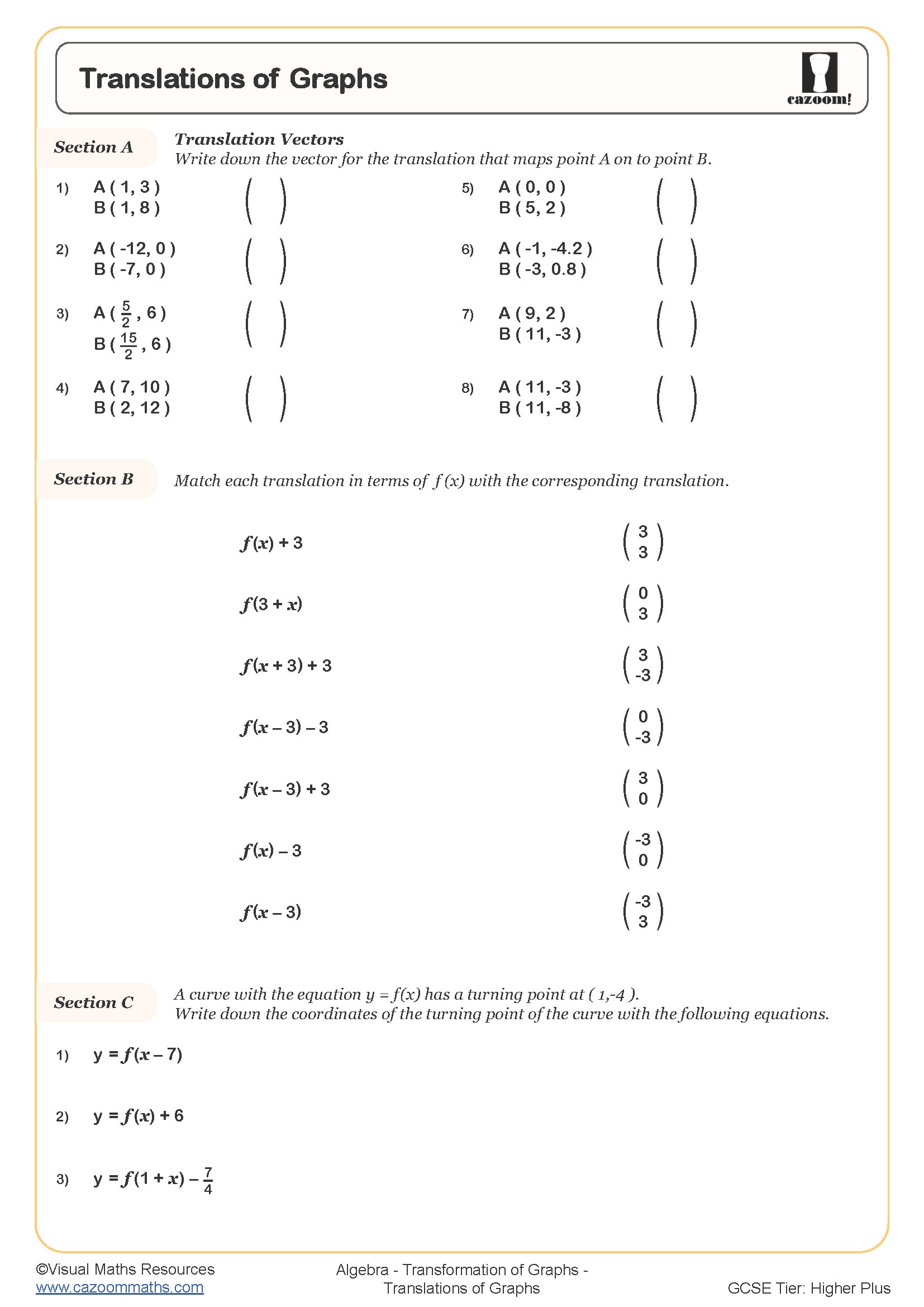
Turning Points
Year groups: 10, 11
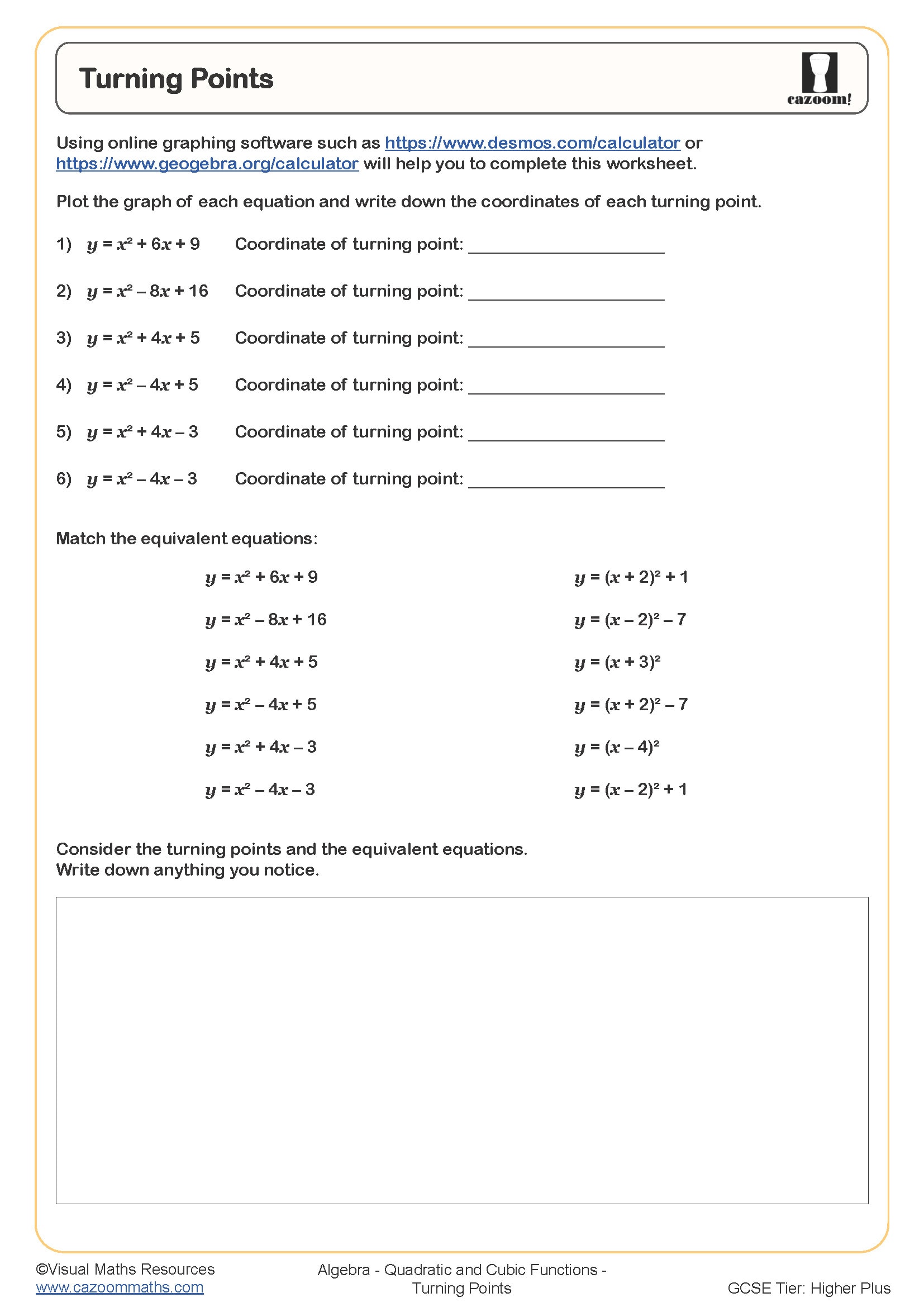
PRINTABLE PDF NON-lINEAR FUNCTIONS WORKSHEET WITH ANSWERS
Check out our Non-Linear Functions Worksheets that will improve your student’s knowledge of solving complex equations. These worksheets are created in easy-to-download PDF format, come with answers, and are designed to simplify and calculate the values of intricate mathematical equations. These Non-Linear Functions Worksheets are excellent resources that will make the whole learning process fun and interesting, helping your students or children improve at solving various critical mathematical problems.
What Are NON-LINEAR Functions?
In mathematics, non-linear functions include equations where the variable is raised to a power other than one, such as “x²” or “x³.” These equations produce curves rather than straight lines. Many real-life issues can be solved with non-linear functions. For example, these equations can be used to predict how certain things will behave or calculate the path of something thrown in the air.
The graph for a basic non-linear function like “y = x²” is a U-shaped curve known as a parabola. The shape itself for more complicated equations and their variations can be adjusted and calculated by changing the numbers within them. Understanding non-linear functions is crucial for developing knowledge and practical skills in various fields of mathematics.
Our worksheets on non-linear functions, including cubic graphs, involve more complex problems. These graphs feature lines curving up and down with multiple bends, illustrating how things change with increased complexity. They are used in physics, engineering, and economics to model various dynamic processes.
What Are The Properties Of non-linear Functions?
Non-linear functions in maths have several important properties.
• Non-linear functions form various shapes when creating a graph, depending on the type of equation.
• They can open upwards, downwards, or curve in multiple directions.
• Every non-linear function has key points such as vertices or inflection points, which serve as turning or critical points for the graph.
• In the case of certain non-linear functions, such as quadratic functions, there will be an axis of symmetry—a vertical line passing through the vertex—that divides the curve into two symmetrical halves.
• The number of real solutions to a non-linear equation is determined by its discriminant or similar criteria, which are based on the coefficients of the function.
Use of non-linear Functions in Real Life
Learning about non-linear functions in maths is highly practical in the real world. These functions are versatile tools that help us understand and solve a wide range of problems. For instance, in physics, non-linear functions can describe the motion of objects, such as calculating the trajectory of a launched projectile. In economics, they help optimize profit by determining the right pricing strategy. Architects and engineers use non-linear equations to design structures with precise curves and stability. Even in everyday life, when you calculate the time it takes for something to fall or how much area your garden covers, you’re often using non-linear functions without realizing it. Mastering non-linear functions empowers us to tackle real-world challenges with mathematical precision and insight.